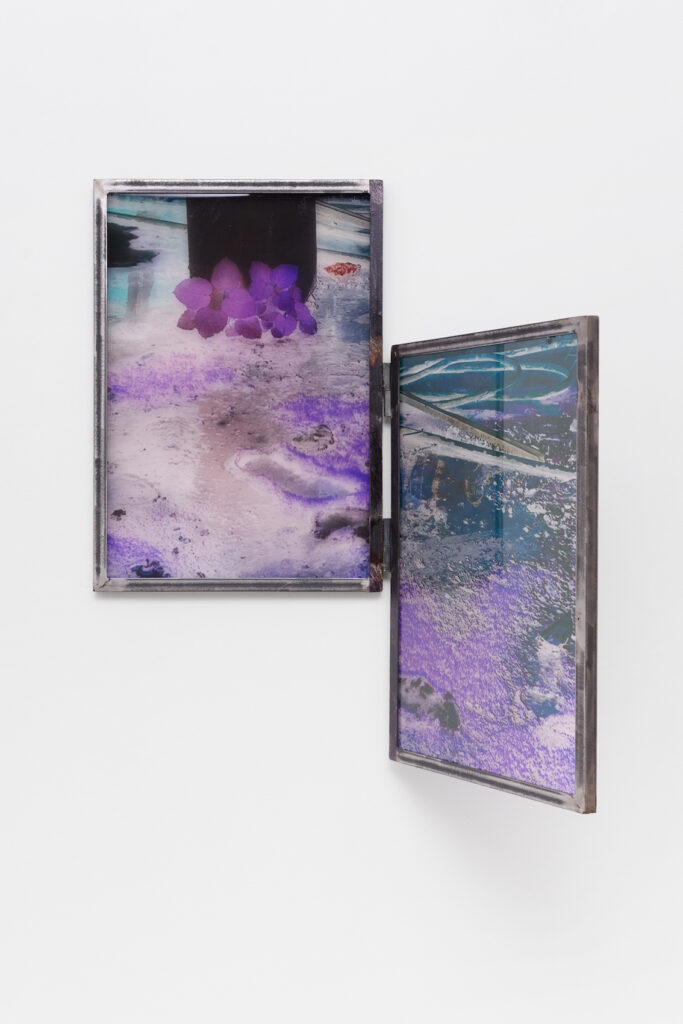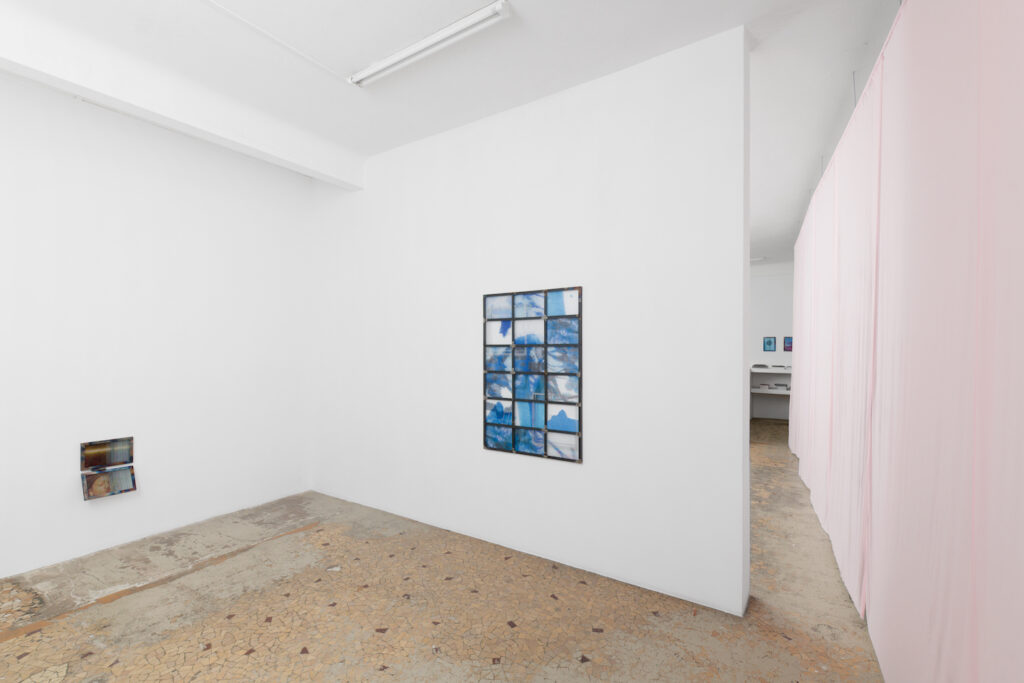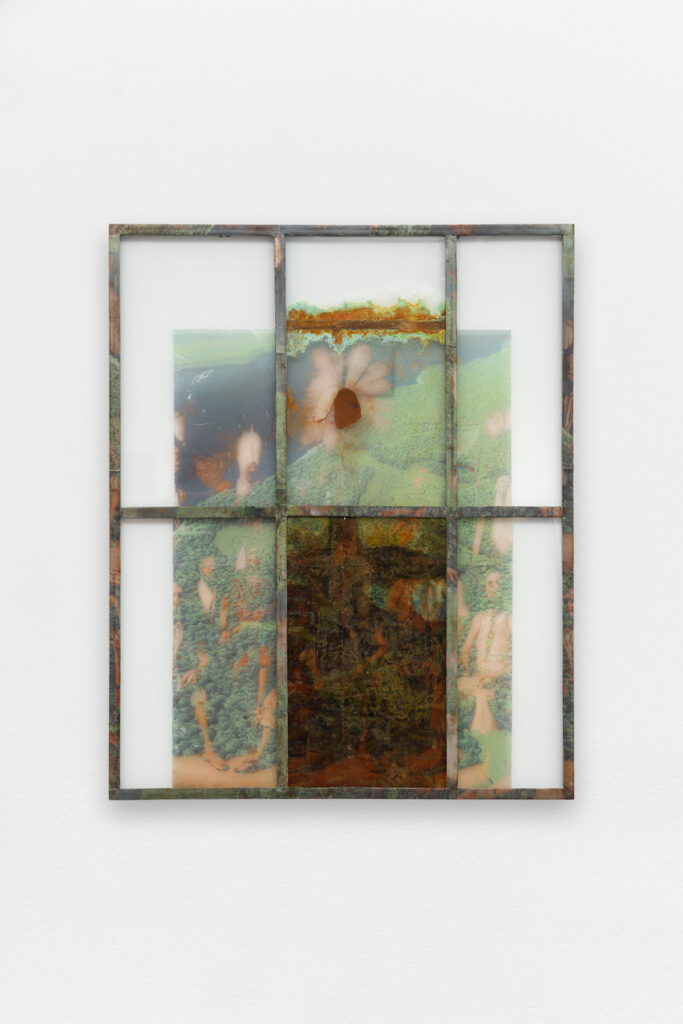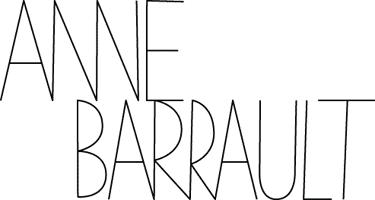Galerie Anne Barrault is delighted to present Euridice Zaituna Kala‘s first solo exhibition in its space.
En quelques gestes: as if two suns were setting develops and thinks about architecture in the city and questions the urban landscape, ultra-exploited by human in the face of surrounding nature.
Winner of the Villa Albertine research residency (2022/2023), Euridice Zaituna Kala wanted to highlight the relationship between the architecture of New York City and its intrinsic link with water, to make visible the relationship of domination resulting from its colonial history, and to bring to light the concept of the liquid city. The artist studied the topography of New York City: its environment, its layout, its buildings and those who occupy them. In particular, she analyzed the role of water; an element that encircles the city, forming a living boundary and asserting the limit of human’s power over his environment.
Following on her work with archives, Euridice Zaituna Kala is also interested in the history of New York City, whose development is profoundly linked to the concealment of water sources, from its formation through to colonization. Originally, it was the indigenous Lenape nation that inhabited the heights of the city, then made up of a succession of hills and rivers, now flattened by urban planning. Thus, Manhattan comes from MannaHatta, meaning “the island of many hills”, now replaced by skyscrapers.
Euridice Zaituna Kala’s research into the notions of contemporary architecture as soft power focuses on Manhattan’s luxury residential skyscrapers, as well as the social housing projects located in and around the city, which are predominantly inhabited by Black and Latin American populations. This reflection led her to note the social inequality that this architecture reflects: skyscrapers dominate the city and occupy the sky, while at the same time housing in more modest neighborhoods is suffering from rising waters caused by climate change. Residents of neighborhoods such as Queens, the Bronx, Brooklyn and Harlem suffer severe flooding every time there’s a storm or heavy rain. There’s a real tension between the water level and the height of the buildings – ever higher – like a race to the top.
The works produced for this exhibition are the result of research developed by the artist during her residency in New York City. There, she took part in environmental initiatives with local associations such as Guardians of Flushing Bay (Flushing Meadows, Corona Park, Queens), which address essential issues of climatic urbanism such as daylighting [1], which proposes the systematic revelation of water sources to create a resilient and protective barrier, bringing back a sustainable ecosystem of shared public spaces: a landscape that reconciles the relationship between city, nature and architecture. Today, these sites have become major causes of fragility, leading to sewage overflows into the ocean, chemical discharges into drinking water networks and the deformation of soil that has become permeable.
For her exhibition at the gallery, Euridice Zaituna Kala imagines an in-between space based on the verticality of power, where architecture appears as a tool of oppression and control, but also as a means of reflecting, integrating or invisibilizing the body of the other. In this way, she puts the hierarchy of this urban landscape into perspective, revealing the absence and transparency of some of its own inhabitants.
Using cinema techniques such as Day-For-Night [Nuit américaine] [2] to explore a whole series of images that speak of this imagined cartography, the revelation of water and iconographies of the future that question the presence of Indigenous peoples and represent the contemporary minority.
In its ultra-city relationship, New York City is the dream city, the city that never sleeps; like a sun that never sets.
“If you don’t sleep, when do you have time to dream?” Alok Vaid-Menon [3]
Euridice Zaituna Kala uses recordings of archival documents, captured conversations and strolls through New York City to compose a narrative and stage an exploration of the archive in space. Through glass sculptures that blend images and reflections, she fashions a representation of this space. Glass enables her to create “heterotopian” places, other places (a concept developed by Michel Foucault in a lecture entitled “Des espaces autres”, 1967), which echo skyscrapers. Inspired by the historical and current cartography of New York City, Euridice Zaituna Kala seeks to shape new geographies that take into account the evolution of architecture in relation to a sensitive ecosystem.
[1] The concept is to free these streams by bringing them to the surface in daylight.
[2] Day-For-Night is a cinematographic outdoor scene supposed to take place at night, but shot in daylight using lighting tricks.
[3] Alok Vaid-Menon est une.e artiste non-binaire/transfem, écrivain.e, performeur.euse, comédien.ne, militant.e pour les droits LGBTQIA+
Euridice Zaituna Kala would like to thank the Villa Albertine, the art center La Criée (Rennes), and Bétonsalon.

Euridice Zaituna Kala
Nuit Americaine, 2024
glass transfer, metal transfer, digital image, metal frame
87 x 77 x 39 cm

exhibition view En quelques gestes : as if two suns were setting, by Euridice Zaituna Kala
(photo Aurélien Mole)

Euridice Zaituna Kala
Future Mannahatta, Representations, light, 2024
glass transfer, metal transfer, digital image IA (Lenape), metal frame
102 x 82,5 x 2 cm
